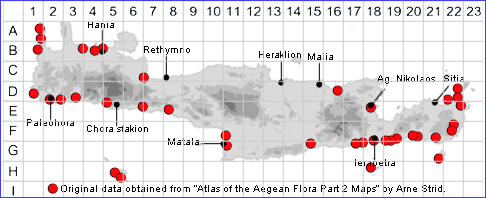LOTUS HALOPHILUS
Family and Genus:- See- LEGUMINOSAE/Sect. LOTEA
Common Name:- Petty birdsfoot-trefoil
Homotypic Synonyms:- None
Meaning:- Lotus (Gr) The ancient name for various leguminous plants.
Halophilus (Gr) Salt-loving.
General description:- Slender, procumbent annual.
Stem:-
1) 5-20 cm. rather densely clothed with short, subappressed, ± crispate hairs.
Leaves:-
1) Rather densely clothed with short, subappressed, ± crispate hairs.
2) Leaflets, small (3-7 mm).
a) lower, obliquely ovate.
b) upper, elliptical, rhachis short.
Flowers:-
1) 1-2(-4) on peduncles 6-15 mm.
2) Calyx, slightly bilabiate,
a) tube, narrowly campanulate.
b) teeth, shorter than or equalling the tube, lateral somewhat shorter than the
others.
3) Corolla, 6-8 mm, only slightly exceeding the calyx, yellow.
Fruit:-
1) Legume, 15-30 x 1.2-1.5 mm, linear-cylindrical, slightly cylindrical torulose,
straight or somewhat curved towards apex. dehiscent at maturity.
Key features:-
1) Legume, 15-30 x 1.2-1.5 mm, linear-cylindrical, dehiscent at maturity.
2) Calyx, slightly bilabiate, teeth unequal, the lateral usually shorter than the rest.
Habitat:- Sandy and saline coastal habitats, occasionally in dry open shrubby
vegetation, field margins and along roads and tracks up to 150 m. Fl. Late Mar to
early June.
Distribution:- Scattered across the Aegean coastal regions, S. Italy, Balkans,
Anatolia to Iran. On Crete scattered mainly around the west and east coastal
regions.
Flowering time:- Late Mar to early June.
Photos by:- Dr. Armin Jagel
SPECIES DESCRIPTION

